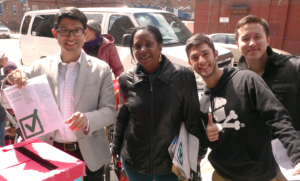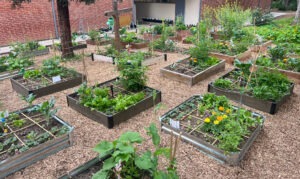Participatory budgeting is one of the fastest growing democratic innovations in North America today. It brings elected officials and civil servants together with their communities to take public dollars and put them toward projects that residents chose. Since this is not the business-as-usual way that governments budget their money, what do elected officials actually think of this new process?
Public Agenda, convener of the North American PB Research Board and supporter of the research of PB that happens on the ground, sought to answer this question. Public Agenda interviewed 43 elected officials – 28 who had done a PB process and 15 who never had – to understand why they do PB or what prevents them from doing it. Read the full report on Public Agenda’s website.
Giving power, getting power
Being able to distribute money is one of the key powers that elected officials hold – so why would they willingly give that up?
Elected officials who have done PB claim that for all the work that goes into it, it yields political returns. For some it was the most popular project that they had done in their time in office. In cases where winning projects did not receive universal support, officials could point to the democracy of the process – the outcome reflects the desires of constituents, rather than any prerogatives of the official themselves. It also gave officials and their staff the opportunity to develop and improve working relationships with other agencies in local government.
What does it take to change democracy?
Many officials noted widespread apathy and cynicism among their constituents – not surprising when only 19% of Americans say they can trust the government always or most of the time. Many officials were brought into the process with the hope that it could reinvigorate their districts.
Many officials expressed surprise that it did not just bring out the “usual suspects” who show up to meetings anyway. New residents came out to participate, and in the process got acquainted with how local government works, and who their elected representative really is. While in some cases the projects that won or were proposed were new ideas that may not have been thought of otherwise, the main goal was a reinvigorating civic participation in a way that improves on the all-too-familiar existing methods of public engagement.
While the excitement for the possibilities of PB are real, most did not see today’s PB as fundamentally transforming government as we know it. They said that the amount of money used for PB is too small to meaningfully give their constituents more power. Some also worried that focusing on district-level projects might distract efforts to work on city-wide issues like housing displacement.

Indeed in the US, most PB processes have not strayed far from the model where an elected official gives about $1 million of discretionary capital money, and puts it up for district-level purposes. Processes like Paris that have put up 65 million Euros, or other efforts like Vallejo’s that have used city-wide participatory budgeting to decide on sales tax revenues are becoming more common, but are not yet the norm. But one of the strengths of participatory budgeting is that it’s fundamentally a process – how we apply that process and what pots of money we use it for is up to us.
Supporting elected officials in PB
Elected officials responded that while they saw the value in the PB process, it was a heavy lift for staff. More funding for staff time to conduct the process would help ease the burden on offices. Tying PB voting with general elections could help with turnout for both.
What was most helpful for elected officials who were new to PB was the chance to talk with others like them who had done it. Some expressed longing for more venues for representative to get together and talk about PB, to share what has worked and what might be possible.
This report by Public Agenda raises important questions as PB spreads across the country. What will it take to change the way government works? How can we support the leadership of elected officials who try? What are the opportunities and challenges of PB today, and how could PB evolve in the future? PB provides elected official and their constituents the unique opportunity to innovate together to strengthen their communities.




